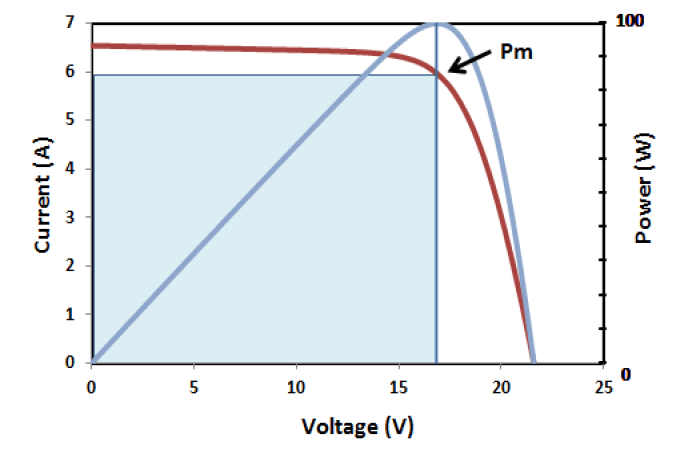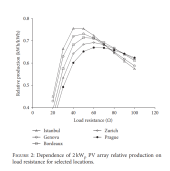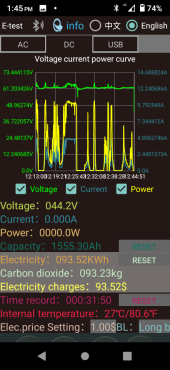I'm wondering about hooking up a PV panel directly to a water heating element. I'm 99.9% sure that this is a dumb idea and I've been told that it will often be inefficient, however I'd like to understand why that is.
PV and Direct Heating Of Hot Water
I've seen some folks talk about using PV panels to heat hot water semi-directly, without the need for batteries, inverters, or any kind of grid tie. What DOES seem to be required is a specialized solar charge controller that knows the voltage the resistance element prefers and will give the resistance element exactly that. However charge controllers seem to crap out sooner than panels do (I've seen people say anywhere between 2-8+ years but yall have more experience than me so...maybe I'm wrong). I don't know what the lifespan or cost of these specialized charge controllers are, but the epever 3000 W MPPT controller I looked at was maybe $240 plus labor to install. I'd need maybe 3.5 of those for my theoretical 9.4 kW array. If it craps out every 5 years that's maybe $900 every five years to replace it. Given that the panels themselves might cost all of $9,500, the 30-year cost of the MPPT controllers looks non-negligible.
PV Direct Water Heating Without MPPT
This has me wondering about how efficient PV panels would be if I hooked them directly to a heating element without the charge controller sitting in the middle. In the post I linked above the author provides a good explanation of what happens if you size the resistance element for the load the panel would provide with full sunshine vs what happens if you size the load for half sunshine. Basically, the lower sunshine situation calls for a higher resistance circuit to fully utilize the lower power and slightly lower voltage.
The Dumb Question
So my question is...what happens if increase the size of the resistor so that the element makes full use of the element on a cloudy day? The resistor would be larger (have a larger impedance) than would be ideal when the panel was in full sun. My question is: What would the effect of this be?
The total power going through the resistor doesn't go up, so I don't *think* it would burn the resistor up. Right? Would it just throttle the current in a way that would reduce the amount of power it would convert to heat? My simple understanding of these things is that any power I put into a heating element should come out as heat, and the limiting factor should be whether the current and voltage wind up melting the element. So I look at this and think that "well it won't melt the element if I keep the power under the listed threshold, so what's the problem, how does it lose efficiency?"
Thanks for the help
PV and Direct Heating Of Hot Water
I've seen some folks talk about using PV panels to heat hot water semi-directly, without the need for batteries, inverters, or any kind of grid tie. What DOES seem to be required is a specialized solar charge controller that knows the voltage the resistance element prefers and will give the resistance element exactly that. However charge controllers seem to crap out sooner than panels do (I've seen people say anywhere between 2-8+ years but yall have more experience than me so...maybe I'm wrong). I don't know what the lifespan or cost of these specialized charge controllers are, but the epever 3000 W MPPT controller I looked at was maybe $240 plus labor to install. I'd need maybe 3.5 of those for my theoretical 9.4 kW array. If it craps out every 5 years that's maybe $900 every five years to replace it. Given that the panels themselves might cost all of $9,500, the 30-year cost of the MPPT controllers looks non-negligible.
PV Direct Water Heating Without MPPT
This has me wondering about how efficient PV panels would be if I hooked them directly to a heating element without the charge controller sitting in the middle. In the post I linked above the author provides a good explanation of what happens if you size the resistance element for the load the panel would provide with full sunshine vs what happens if you size the load for half sunshine. Basically, the lower sunshine situation calls for a higher resistance circuit to fully utilize the lower power and slightly lower voltage.
The Dumb Question
So my question is...what happens if increase the size of the resistor so that the element makes full use of the element on a cloudy day? The resistor would be larger (have a larger impedance) than would be ideal when the panel was in full sun. My question is: What would the effect of this be?
The total power going through the resistor doesn't go up, so I don't *think* it would burn the resistor up. Right? Would it just throttle the current in a way that would reduce the amount of power it would convert to heat? My simple understanding of these things is that any power I put into a heating element should come out as heat, and the limiting factor should be whether the current and voltage wind up melting the element. So I look at this and think that "well it won't melt the element if I keep the power under the listed threshold, so what's the problem, how does it lose efficiency?"
Thanks for the help







